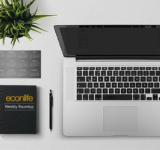Yesterday, we said milk consumption was down.
But, what are we drinking?
Beverage Consumption
U.S.
Statista tells us that one third of all Americans do not drink tap water and a second third filters their tap water (although it probably needs no treatment). However, whether we do or do not drink tap water, it is likely that we will consume bottled water.
Below you can see that 63 percent of all Americans drink bottled water regularly:

The World
For the world, bottled water again tops the list. Then tea is #2:
And beer is #3:

However, top per capita beer consumption has been in Czechia (6.77), Austria (6.3), Poland (5.72), and Germany (5.57):
While coffee is not at the top for global beverage consumption, it is for certain countries:
Our Bottom Line: Inventing Hydration
The invention of hydation helped to propel bottled water as our most popular drink. Decades ago, before anyone started thinking about hydration, we were okay. But now, we go nowhere without our water bottles.
Why?
Many of us have been told to drink eight 8-ounce cups of water a day. Known as the conventional wisdom, 8 x 8 feeds healthy skin, is good for the kidneys, and prevents constipation. Its origins were reputedly in the 1945 Dietary Guidelines from the National Academy of Sciences. Citing the average male’s weight, they wound up with 8 x 8.
Still, for years, no one believed you should drink before exercising. Sloshing around in our belly, the water was supposed to slow us down. Then though, at the University of Florida, a coach complained that the heat and humidity were exhausting his Gators. The players felt better after drinking some water, salt, and sugar that eventually got a taste of lemon juice, Soon to be called Gatorade, the concoction worked. It only needed a reason to exist beyond the football field.
Demand
And thus, the idea of hydration was born. Or, we could say it was invented. After all, we get our water signals from thirst. Hydration is a different concept. We hydrate all the time, even when we are not thirsty.
From here, hydration got a boost from the emerging science of wellness. During the 1970s, wellness became connected to a newly imported bubbly water called Perrier and then with Evian. During the 1980s, the development of plastic bottles meant we could travel with our water. The rest of the story is history. We have been hydrating ourselves ever since.
Explaining the phenomenon, an economist would see an increasingly affluent consumer that was concerned with health and exercise. As a good that (reputedly) enhanced each activity, water was a complementary item. On a graph, we could say that as the demand for wellness and exercise grew, so too did the demand for bottled water.
My sources and more: Thanks to my Statista enail newsletter, here, for many of my facts on beverage consumption. From there, the perfect complement, this Decoder Ring podcast.inspired “Our Bottom Line.” Please note that most of “Our Bottom Line” was in a past econlife post. I should also note that it was almost impossible to access ungated world beverage consumption statistics so I selected instead a variety of years and separate drinks. Also, I cannot confirm the TeaBiz graph but it pretty much corresponded with Wikipedia data.








